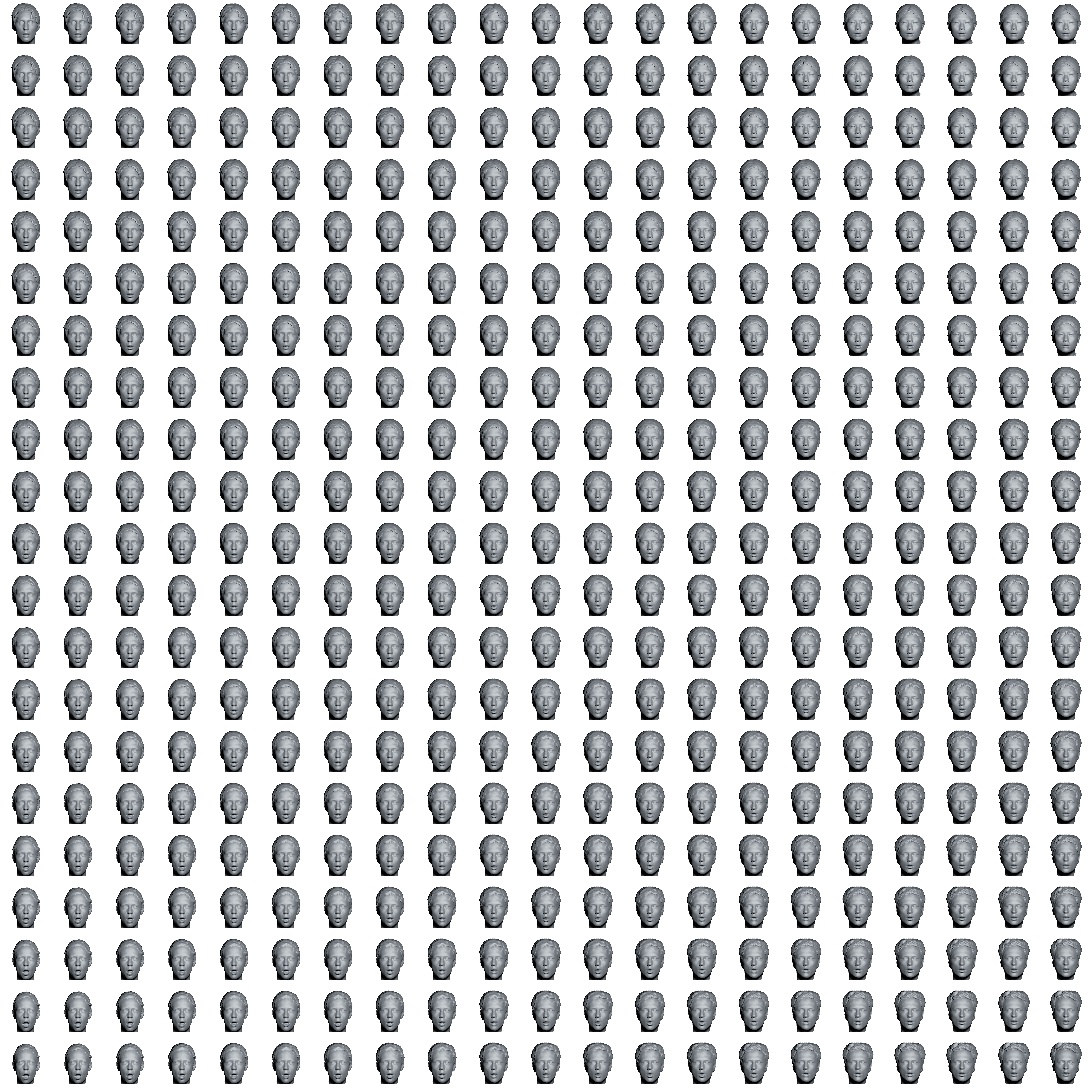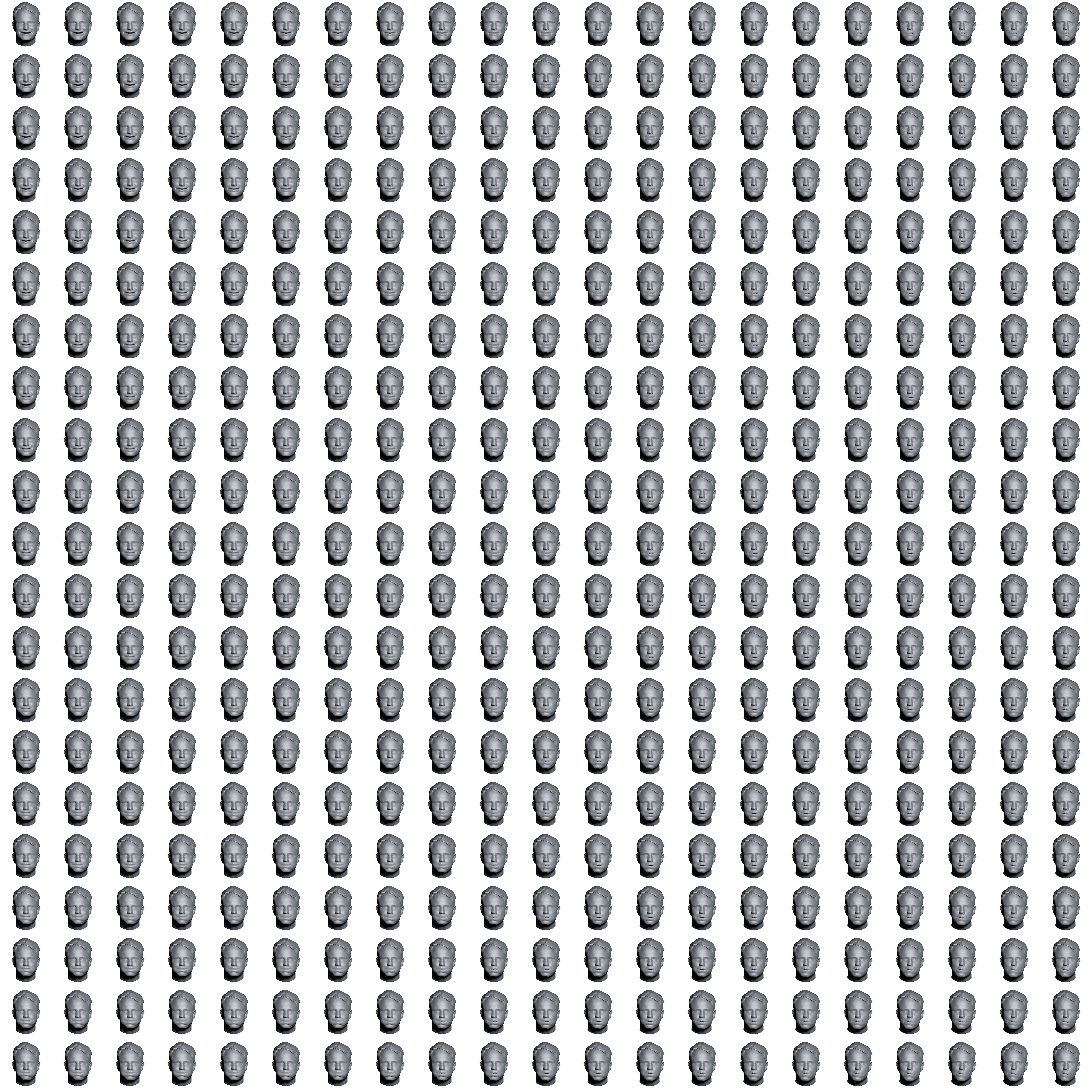
We propose to learn a neural parametric head model based on neural fields: first, we capture a large dataset of over 2000 high-fidelity head scans with varying shapes and expressions (left). We then non-rigidly register these scans to generate our training data. As a result of training, we obtain a disentangled latent that spans the space of shapes $\mathbf{z}_{id}$ and expressions $\mathbf{z}_{ex}$ (middle). At inference time, we can leverage the prior of our learned representation by fitting our model to a sparse input point cloud by solving for the latent codes (right).



